Fishes
Media

Species Types
Scientific Name
Fundulus olivaceus
Description
The blackspotted topminnow is a sleek, swift little fish that lives in quiet, clear sections of rivers mostly south of the Missouri River. Topminnows have a habit of skimming along just beneath the surface of the water.
Media
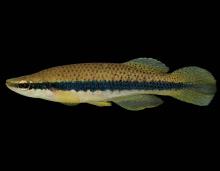
Species Types
Scientific Name
Fundulus notatus
Description
The blackstripe topminnow has a slender, elongated shape and is a sleek, swift fish. Topminnows have a habit of skimming along just beneath the surface of the water.
Media

Species Types
Scientific Name
Platygobio gracilis
Description
The flathead chub is a slender, silvery minnow with small eyes, sickle-shaped pectoral fins, and wedge-shaped head with a pointed snout. Native to Missouri's big rivers and their tributaries, it is now state endangered.
Media
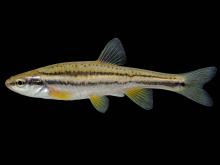
Species Types
Scientific Name
Chrosomus erythrogaster (formerly Phoxinus erythrogaster)
Description
The southern redbelly dace has two dusky stripes separated by a broad golden stripe along the side. The bellies of males turn brilliant red in spring. It lives in small creeks and spring branches of the Ozarks with permanent flow of cool, clear water and a gravel or sand bottom.
Media

Species Types
Scientific Name
Nocomis biguttatus
Description
The hornyhead chub is a moderately large, slender minnow with a rather large, nearly horizontal mouth. Males commonly have bony projections on top of the head. Occurs in clear Ozark streams with permanent flow and clean gravel.
Media
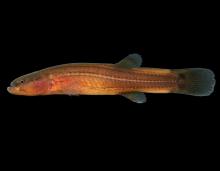
Species Types
Scientific Name
Forbesichthys agassizi
Description
The spring cavefish is the only cavefish in our state that has eyes, however small, and whose body is yellowish brown or brown; our other cavefishes lack eyes entirely and are pale and nearly colorless.
Media
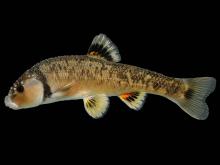
Species Types
Scientific Name
Campostoma anomalum (syn. C. pullum)
Description
The central stoneroller is a brownish minnow with small eyes. The lower jaw has a flat, shelflike extension used to scrape algae from rocks. Found statewide, it is most active during the daytime.
Media
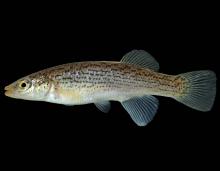
Species Types
Scientific Name
Fundulus catenatus
Description
The northern studfish is common and widely distributed in every principal Ozark stream system except the Neosho. Males in spawning coloration are some of our prettiest topminnows.
Media
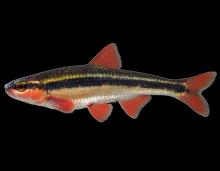
Species Types
Scientific Name
Luxilus pilsbryi
Description
In our state, the duskystripe shiner is only found in the White River system of southwest and south-central Missouri. It prefers swift, clear headwater streams. The dark stripe along the side extends from nose to tail with a lighter-colored band above it.
Media
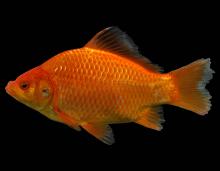
Species Types
Scientific Name
Carassius auratus
Description
Goldfish are not native to North America. They often escape into the wild from bait buckets and other causes, but there are few self-sustaining populations in Missouri.
See Also


Media

Species Types
Scientific Name
Amphiuma tridactylum
Description
The three-toed amphiuma is an eel-like, completely aquatic salamander. It has very small forelimbs and hind limbs, each with three tiny toes. In Missouri it’s found only in the Bootheel region.
Media

Species Types
Scientific Name
Siren intermedia nettingi
Description
The western lesser siren is an eel-like, aquatic salamander with external gills, small eyes, small forelimbs with four toes, and no hind limbs. In Missouri, it’s found mostly in the Bootheel and northward in counties near the Mississippi River.
About Fishes in Missouri
Missouri has more than 200 kinds of fish, more than are found in most neighboring states. Fishes live in water, breathe with gills, and have fins instead of legs. Most are covered with scales. Most fish in Missouri “look” like fish and could never be confused with anything else. True, lampreys and eels have snakelike bodies — but they also have fins and smooth, slimy skin, which snakes do not.





















